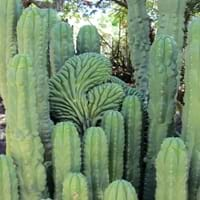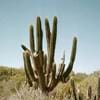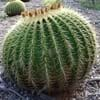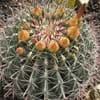Life Span
Perennial
Perennial
Type
Cactus or Succulent
Bulb or Corm or Tuber
Origin
North America, Latin America and the Caribbean, Central America, South America, Brazil
South America
Types
Not available
Pamianthe cardenasii , Pamianthe parviflora , Pamianthe peruviana
Number of Varieties
Not Available
Habitat
shrublands
All sorts of environments
USDA Hardiness Zone
12-15
8-10
Sunset Zone
12, 13, 16, 17, 21, 22, 23, 24
21,22
Habit
Upright/Erect
Clump-Forming
Flower Color
White, Yellow, Red, Purple, Orange, Rose
White
Flower Color Modifier
Not Available
Bicolor
Fruit Color
Not Available
Green
Leaf Color in Spring
Not Available
Dark Green
Leaf Color in Summer
Not Available
Light Green
Leaf Color in Fall
Not Available
Several shades of Green
Leaf Color in Winter
Not Available
Light Green
Leaf Shape
Succulent
Strap shaped
Plant Season
Not Available
Spring, Summer, Fall
Sunlight
Full Sun, Partial Sun, Partial shade
Partial Sun, Partial shade
Type of Soil
Loam, Sand
Loam, Sand
The pH of Soil
Acidic, Neutral, Alkaline
Acidic, Neutral, Alkaline
Soil Drainage
Well drained
Average
Bloom Time
Spring
Spring, Late Spring, Early Summer, Summer, Late Summer
Tolerances
Drought
Drought
Where to Plant?
Ground, Pot
Ground, Pot
How to Plant?
Cuttings
Offsets
Plant Maintenance
Medium
Medium
Watering Requirements
Keep ground moist, Keep immersed in water, Requires more often in extreme heat
Keep the ground moist but not water-logged
In Summer
Lots of watering
Lots of watering
In Spring
Moderate
Moderate
In Winter
Average Water
Average Water
Soil pH
Acidic, Neutral, Alkaline
Acidic, Neutral, Alkaline
Soil Type
Loam, Sand
Loam, Sand
Soil Drainage Capacity
Well drained
Average
Sun Exposure
Full Sun, Partial Sun, Partial shade
Partial Sun, Partial shade
Pruning
Prune to stimulate growth
Pinch or prune as they grow to promote branching and bushiness, Remove damaged leaves, Remove dead branches, Remove dead leaves, Requires little pruning
Fertilizers
6-12-12 or 5-10-10
All-Purpose Liquid Fertilizer, High phosphorus
Pests and Diseases
Mealybugs, Red spider mite, Scale insects, Slugs, Snails
Leaf spot, Mosaic viruses
Plant Tolerance
Drought
Drought
Flower Petal Number
Single
Single
Fragrant Flower
Not Available
No
Fragrant Fruit
Not Available
No
Foliage Texture
Bold
Coarse
Foliage Sheen
Not Available
Glossy
Attracts
Hummingbirds
Bees, Birds, Bumblebees, Butterflies, Hummingbirds, pollinators
Allergy
drowsiness, Nausea, Vomiting
Unknown
Aesthetic Uses
Beautification, Decorating walls, Showy Purposes, Used for decorating walls, fences, gates, hedges, etc.
Beautification, Bouquets, Ornamental use, Showy Purposes
Beauty Benefits
Not Available
No Beauty Benefits
Environmental Uses
Air purification
Air purification
Medicinal Uses
Aphrodisiac, Tonic
No Medicinal Use
Part of Plant Used
extracted oil
Not Available
Other Uses
Used as Ornamental plant, Used for its medicinal properties, Used for Landscaping
Beneficial species for attracting pollinators, Decoration Purposes
Used As Indoor Plant
Yes
No
Used As Outdoor Plant
Yes
Yes
Garden Design
Container, Houseplant, Rock Garden, Wall
Bog Garden, Container, Feature Plant, Foundation, Mixed Border, Water Gardens
Botanical Name
ECHINOPSIS pachanoi
HYMENOCALLIS longipetala
Common Name
San Pedro
Peruvian Daffodil, Spiderlily
In Hindi
सैन पेड्रो
peruvian daffodil
In German
Echinopsis pachanoi
peruvian daffodil
In French
Echinopsis pachanoi
peruvian daffodil
In Spanish
Echinopsis pachanoi
Pamianthe
In Greek
San Pedro κάκτος
peruvian daffodil
In Portuguese
Wachuma
peruvian daffodil
In Polish
San pedro (kaktus)
peruvian daffodil
In Latin
San Pedro
peruvian daffodil
Phylum
Tracheophyta
Magnoliophyta
Class
Magnoliopsida
Liliopsida
Order
Caryophyllales
Asparagales
Family
Cactaceae
Amaryllidaceae
Genus
Echinopsis
Pamianthe
Clade
Angiosperms, Core eudicots, Eudicots
Angiosperms, Monocots
Tribe
Trichocereeae
Clinantheae
Subfamily
Cactoideae
Amaryllidoideae
Number of Species
Not Available
Not Available
Season and Care of San Pedro and Peruvian Daffodil
Season and care of San Pedro and Peruvian Daffodil is important to know. While considering everything about San Pedro and Peruvian Daffodil Care, growing season is an essential factor. San Pedro season is Not Available and Peruvian Daffodil season is Not Available. The type of soil for San Pedro is Loam, Sand and for Peruvian Daffodil is Loam, Sand while the PH of soil for San Pedro is Acidic, Neutral, Alkaline and for Peruvian Daffodil is Acidic, Neutral, Alkaline.
San Pedro and Peruvian Daffodil Physical Information
San Pedro and Peruvian Daffodil physical information is very important for comparison. San Pedro height is 30.00 cm and width 15.20 cm whereas Peruvian Daffodil height is 61.00 cm and width 61.00 cm. The color specification of San Pedro and Peruvian Daffodil are as follows:
San Pedro flower color: White, Yellow, Red, Purple, Orange and Rose
San Pedro leaf color: Not Available
Peruvian Daffodil flower color: White
- Peruvian Daffodil leaf color: Dark Green
Care of San Pedro and Peruvian Daffodil
Care of San Pedro and Peruvian Daffodil include pruning, fertilizers, watering etc. San Pedro pruning is done Prune to stimulate growth and Peruvian Daffodil pruning is done Pinch or prune as they grow to promote branching and bushiness, Remove damaged leaves, Remove dead branches, Remove dead leaves and Requires little pruning. In summer San Pedro needs Lots of watering and in winter, it needs Average Water. Whereas, in summer Peruvian Daffodil needs Lots of watering and in winter, it needs Average Water.





